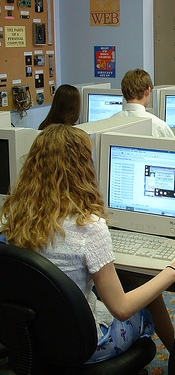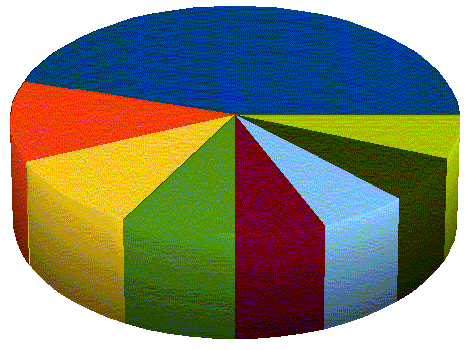
Menu:
Behrooz Parhami's INT 94TN Course Page for Fall 2018

Puzzling Problems in Science and Technology
Page last updated on 2018 December 14
Note: This is a new freshman seminar, first offered in fall 2016
Enrollment code: 58172
Prerequisite: Open to freshmen only
Class meetings: W 4:00-4:50, HSSB 3201
Instructor: Professor Behrooz Parhami
Open office hours: M 12:00-2:00, W 1:00-2:00, HFH 5155
Course announcements: Listed in reverse chronological order
Grading scheme: Pass/Fail grade assigned based on attendance
Course calendar: Schedule of lectures and links to lecture slides
The ten lectures: Lecture summaries and references
Additional topics: Possible replacements for current lectures
Attendance record: Please check regularly for possible errors
Miscellaneous information: Motivation, catalog entry, history
[The design and goals of this seminar resemble those of ECE 1B, "Ten Puzzling Problems in Copmuter Engineering."]
Course Announcements

2018/12/14: The fall 2018 offering of INT 94TN is officially over and course grades have been reported to the Registrar. Wishing you joyous holidays and a happy New Year!
2018/12/10: As of today, only one student needs to take action to avert a "Not Pass" grade.
2018/12/05: The final attendance record has been posted. Five students must take some action, per instructions under "Grading Scheme" below, in order to earn a "Pass" grade. Oral final exams will take place on R 12/06 and F 12/07.
2018/11/21: Five Thanksgiving-eve absences (Lecture 8) and one Lecture-7 absence remain unexplained. Please send me an e-mail message to explain your single absence.
2018/11/13: A few students have inquired about 3D-printing options, following our discussion of the topic in class. We have several 3D printers within UCSB departments for instructional use. Physics, ME, and ECE Departments are examples. Some departmental resources can be used by anyone for a fee, designed to help with covering maintenance costs. You should contact the respective departmental office for the usage process and fees. However, according to Dr. Ilan Ben Yaacov of UCSB's ECE Department, on-line options, as well as in-store services in places such as Staples, tend to be cheaper.
2018/10/24: I have posted the attendance record up to today's Lecture 4. Lecture 5 next week has been cancelled, with everyone marked "present" in the attendance record, as I will be attending two back-to-back conferences during the week. Lecture 6 on W 11/07 will be combined with Lecture 5 to make up for the lost class session.
2018/06/22: Welcome to the INT 94TN Freshman Seminar Web page for fall 2018. Please read the grading scheme below very carefully to ensure that you can earn a "pass" grade at the end of the quarter. INT 94TN requires no textbook and has no homework assignments or exams. A worksheet handout is given out at the beginning of each lecture and complete lecture slides are made available on-line. Please report any broken hyperlink to the instructor.
Grading Scheme
Pass/Not-Pass grading is based on attendance and class participation. There will be no homework or exam.
0 absence: Automatic "Pass."
1 absence: "Pass" if you submit a written statement to explain the absence. Any explanation is acceptable.
2 absences: Can earn a "Pass" grade by taking an oral final exam covering the two missed lectures.
3 or more absences: Automatic "Not-Pass."
Attendance will be taken 10 minutes into the class session and recomfirmed just before dismissal. If you have to leave early, please see the instructor before class to state your reasons and make appropriate arrangements.
Course Calendar

Course lectures have been scheduled as follows. PowerPoint presentations (up to 2+ MB), and equivalent PDF files, are updated periodically. Please note that any animation in PowerPoint presentations is lost in the PDF versions. Before downloading the slides, check the "last updated" date to make sure you have the latest files for 2018. This schedule will be followed strictly. You can refer to the Web page for ECE 1B for additional topics (mostly in computer engineering) presented in the same style.
Day & Date (Lecture slides, ppt + pdf, and ppt handout) Lecture title
W 10/03 (ppt, pdf, handout, last updated 2018/10/02) Predicting the Future: Puzzles
W 10/10 (ppt, pdf, handout, last updated 2018/10/02) Predicting the Future: Sci/Tech
W 10/17 (ppt, pdf, handout, last updated 2018/10/12) Recommender systems: Puzzles
W 10/24 (ppt, pdf, handout, last updated 2018/10/12) Recommender systems: Sci/Tech
W 10/31 (ppt, pdf, handout, last updated 2018/10/27) No lecture: Instructor at a conference
W 11/07 (ppt, pdf, handout, last updated 2018/10/27) 3D models from 2D images: Puzzles & Sci/Tech
W 11/14 (ppt, pdf, handout, last updated 2018/11/12) Computational geometry: Puzzles
W 11/21 (ppt, pdf, handout, last updated 2018/11/12) Computational geometry: Sci/Tech
W 11/28 (ppt, pdf, handout, last updated 2018/11/18) Maps and graphs: Puzzles
W 12/05 (ppt, pdf, handout, last updated 2018/11/18) Maps and graphs: Sci/Tech
Summary and References for the Ten Lectures

Lecture 1: Predicting the future: Puzzles
Sloane, N.J.A., "Find the Next Term," J. Recreational Mathematics, 1974 [GIF]
Sloane, N.J.A., Online Encyclopedia of Integer Sequences
Solution methods for numerical series, including polynomial extrapolation
Solution methods for non-numerical series
Lecture 2: Predicting the future: Sci/Tech
Technology forecasting: Firat, A. K., W. L. Woon, and S. Madnick, "Technological Forecasting—A Review," Working Paper CISL#2008-15, MIT's Sloan School of Management, September 2008.
Inventory forecasting
Stock-market prediction
Program branch prediction
Lecture 3: Recommender systems: Puzzles
Finding similarities and differences among images
Which item isn't like the others or most similar to the others?
Solution methods for similarity puzzles
Pattern classification, using one or more features
Lecture 4: Recommender systems: Sci/Tech
Fingerprint matching
Image search
Recommender systems basics (Book chapter)
Mining massive datasets (YouTube videos) [See in particular video 5.1]
Google's page-rank algorithm
Lecture 5: 3D models from 2D images: Puzzles
2D projections of 3D objects (Image)
Projections of assemblies made from cubic blocks
Isometric and various views; front, top, right (Image)
Deducing 3D geometric objects from 2D drawings
Visible and invisible elements in 2D views
Lecture 6: 3D models from 2D images: Sci/Tech
3D illusion in 2D drawings (sidewalk art)
3D body scans
Modeling of industrial parts and assemblies, such as cars and planes
Architectural visualization
Modeling of historical sites in danger of collapse or destruction
Models built from layers, and 3D printing
Lecture 7: Computational geometry: Puzzles
Tricks and optical illusions
Intersecting and touching geometric shapes
Tiling the plane
Web site devoted to discrete and computational geometry [The Geometry Junkyard]
Lecture 8: Computational geometry: Sci/Tech
Dot-matrix printing
Drawing lines and other geometric shapes
Hidden line removal
Hidden surface determination and shading
Robot path planning with obstacles
Lecture 9: Maps and graphs: Puzzles
Graph colorings
Graph isomorphism
The bridges of Konigsberg puzzle
Shortest-path problems
Feeman, T.G., Portraits of the Earth: A Mathematician Looks at Maps, American Mathematical Society, 2002
Lecture 10: Maps and graphs: Sci/Tech
Google Maps
GPS and its applications (e.g., ground and structure movements, navigation)
Routing and scheduling
The traveling salesperson problem
Resource-placement problems
Additional Lecture Topics for Possible Future Use
Spare topic: Reliability engineering
Puzzles based on probability
The black-swan effect: events with extremely low probabilities
Probability brain-teasers
Student Attendance Record

In the following table, absence is marked with a "1" and presense with a "0". The first ten columns correspond to Lectures 1-10, the next column, Σ, is the total number of absences, and "Mrep" is the first few digits of the reversed Perm Number. For example, a student with the Perm Number 9876543 will have a Mrep code of 3, 34, 345, 3456, ... , depending on whether other students have Perm Numbers with the same ending.
Attendance record will be updated the day after each lecture, beginning on W 10/03.
1 2 3 4 5 6 7 8 9 0 Σ Mrep Notes about attendance, oral final exam, and grade
0 0 0 0 0 1 0 0 0 0 1 00 Pass
0 0 0 0 0 0 0 1 0 0 1 09 Pass
0 0 0 0 0 0 0 0 0 0 0 1 Pass
0 0 0 0 0 0 0 1 0 0 1 216 Pass
0 0 0 0 0 0 0 0 0 1 1 219 Pass
0 0 0 0 0 0 0 0 0 0 0 25 Pass
0 0 0 0 0 0 0 1 0 0 1 383 Pass
0 0 0 0 0 0 0 1 0 0 1 384 Pass
0 0 0 0 0 0 1 0 0 0 1 44 Pass
0 0 0 1 0 0 0 0 0 0 1 46 Pass
0 0 0 0 0 1 0 1 0 0 2 51 Pass (based on oral final exam held on F 12/07, 4:10 PM)
0 0 1 0 0 0 0 0 0 0 1 52 Pass
0 0 0 0 0 0 0 1 0 0 1 71 Pass
0 0 0 0 0 0 0 1 0 0 1 79 Pass
0 0 0 0 0 0 0 1 0 0 1 8 Pass
0 0 0 0 0 0 0 1 0 0 1 9 Pass
Miscellaneous Information
Motivation: Whether they work in the industry or in academic research settings, scientists and engineers face many challenges in the discovery and advancement of new theories and in the quest to design complex structures and processes that are both reliable and usable. It is difficult to discuss these topics at the freshman level, given the lack of background in the requisite subjects. This seminar is intended to provide an introduction to day-to-day problems and research endeavors in science and technology via their connections to familiar mathematical and logical puzzles.
Catalog entry: INT 94TN. Puzzling Problems in Science and Technology. (1) PARHAMI. 1 hour/week.
Prerequisite: Open to UCSB freshmen from all disciplines.
Restrictions: Subject to campus rules for interdisciplinary freshman seminars.
Scientific research and technological development problems are puzzle-like in the sense of requiring insight and out-of-the-box thinking for their solution. Many such problems are actually related to popular math/logic puzzles in terms of the pertinent insights and solution methods. In this 1-unit seminar, several puzzles are introduced and linked to science/technology topics. Examples include "finding the next term in a series" (technology forecasting, program branch prediction), "detecing similarities and differences in images" (fingerprint matching, recommender systems), and "deducing 3D shapes from 2D images" (body imaging, architectural models).
History: This seminar came about as an extension of a 1-unit seminar, proposed and designed by Professor Parhami for computer engineering students (first offered in spring 2007 as ECE 1, later becoming ECE 1B). The main goal of both seminars is to expose students to challenging problems, faced by engineers and research scientists, in a motivating and entertaining way, while requiring a minimal background in math and science.
Fall 2016 offering of INT 94TN
Web page for ECE 1B